Guitar World Verdict
The guitars are built to supreme levels of craftsmanship; they play beautifully and sound amazing, just what a great Strat and Tele should be. What’s more, their single-coil clarity will transcend to blues and rock guitar bliss through a decent pedalboard into a cleanish amp.
Pros
- +
The best vintage remodelling by Fender to date.
- +
Period-correct features evoke original designs.
- +
Flawless construction.
- +
Great sounds, good price.
- +
Classic Strat playability.
- +
Authentic remake of the guitar’s first year as ‘Telecaster’. The Tele has a super-feeling chunky neck.
Cons
- -
There’s really nothing we can fault here, but you might want to spend an extra 40 bucks on compensated saddles.
You can trust Guitar World
The vintage reissue side of Fender’s product range has undergone all manner of changes since the first AVR models appeared back in the early ’80s. Hence the bewildering name and line-up changes that have befallen this vital portion of Fender’s income stream over the years.
Its last iteration was the American Original series, which, rather than focus on specific years, amalgamated general aspects of a decade into each model. There were some great instruments among the range, but Fender has recently been feeling it’s time to go back to basics.
So 2022 sees the launch of some very interesting guitars that Fender has titled American Vintage II. It’s a succinct but tastefully chosen range and includes most of the usual suspects, plus some that weren’t even considered ‘vintage’ back in 1982, such as the 1975 and 1977 Telecaster Deluxe and Custom. Here, however, we are looking at the true core of this new line-up, the ’51 American Vintage II Telecaster and ’61 Stratocaster.
If you recall that first Reissue range, you’ll notice that what was the 1952 Tele is now the ’51, and what was the 1962 Strat is now the ’61. We asked Fender what changes between those years were noticeable enough to warrant the difference…
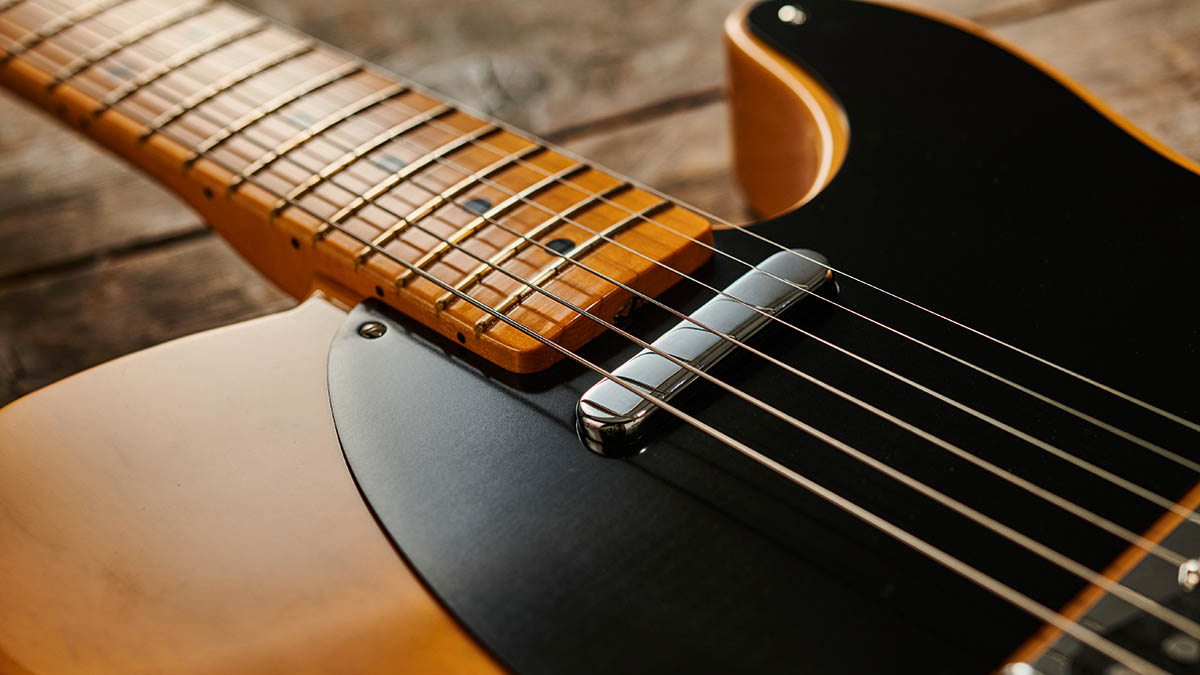
“Well, 1951 was the first time a Telecaster decal was applied to a Fender electric guitar, so what better year to kick off our new American Vintage II line?” we’re told. “Also, in 1951 the Telecaster used slotted screws, which started changing in 1952 to Phillips head screws, eventually becoming all Phillips in ’53.
“Also, the Fender headstock logo was less angled in ’51; it was more angled in ’50 and then again in ’52. Also, the truss rod adjustment screw changed from slotted to Phillips in ’51, which is what you see on our AV II ’51.”
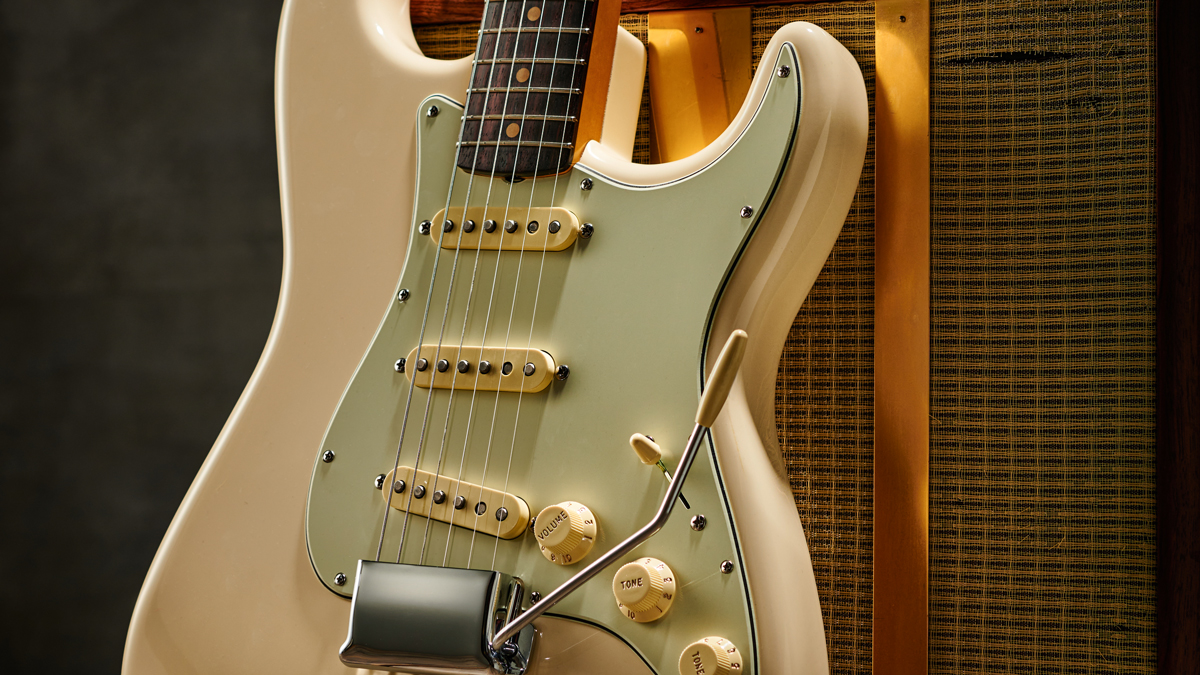
And the Strat? “1961 was the year the Stratocaster sunburst finish changed to a more robust red and a blacker black. In 1961 the headstock decal logo showed two patent numbers, which changed to three in ’62. In 1961 it was also a slab rosewood ’board, which changed to a round lam in mid-’62.
“We like to think these and all changes are noteworthy and significant. We play a guitar or bass from a particular vintage year, get excited and celebrate it. We may switch it up in a year or two – there’s something to honour in each year of every Fender model.”
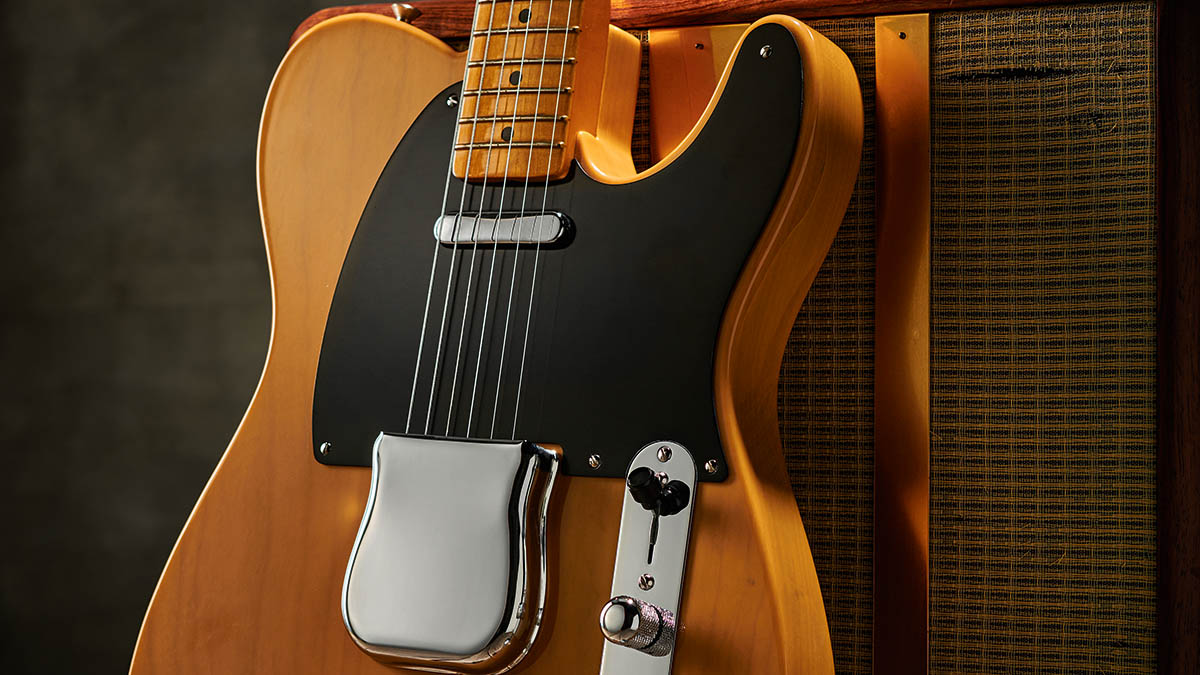
It seems, too, that Fender has sourced original guitars from each particular reissue year, and spec’d and voiced them accordingly.
Fender again: “As you might imagine, we have a number of vintage Telecasters and Stratocasters at our disposal, some owned by Fender folks, some owned by friends and some in vintage shops we frequent around town. We always like to get our hands on as many samples of specified years as we can during development, so as to get a feel for how our prototypes compare.”
From this you can guess that the two guitars’ construction is as close to the originals as modern production techniques, health and safety laws, availability of materials and so on, allows. And looking them over in fine detail reveals build quality that’s as good, and probably better than ever. Each one is flawlessly put together, from the gloss finishing to the woodworking, neck‑to‑body fit, fretwork, setup and more.
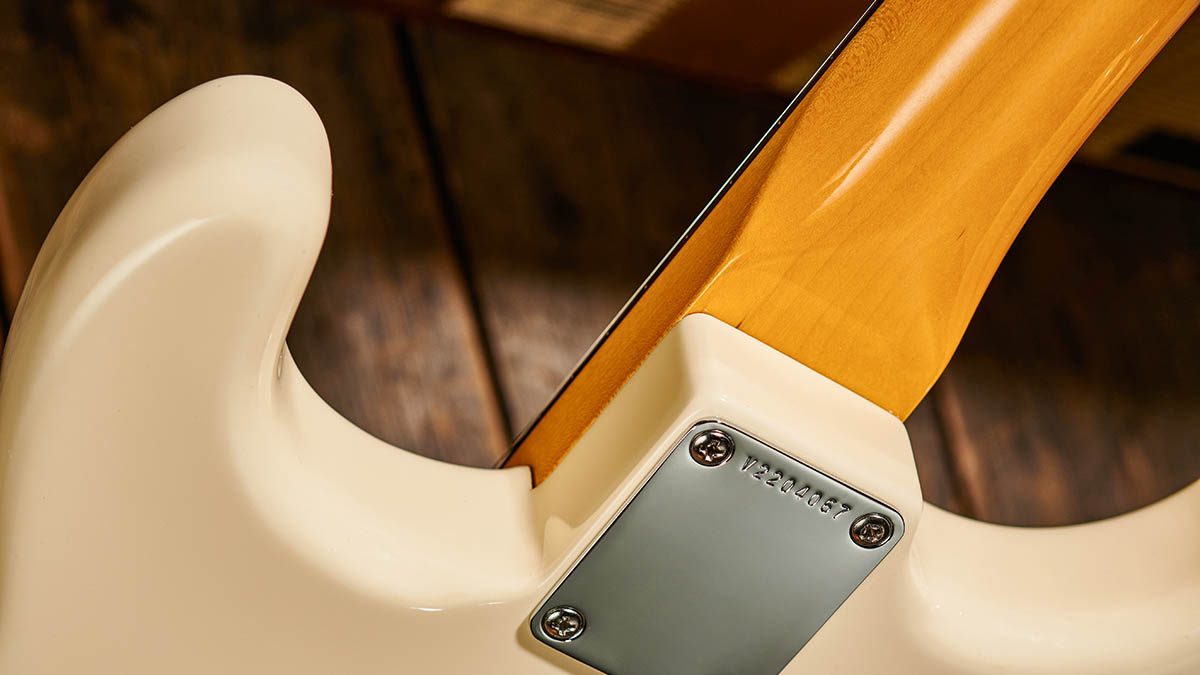
Timber-wise, of course, it’s ash for the Tele’s body and alder for the Strat – with no obvious body join on either, although they are likely to be two-piece spreads – and while the Tele’s neck is a hefty hunk of solid maple with a skunk stripe at the back, the Strat features a slab rosewood ’board on a slimmer neck, with no walnut fillet.
Fender tells us that the necks and bodies of the 50s and 60s models are finished in nitrocellulose; the Tele’s delightfully amber-toned Butterscotch Blonde and the Strat’s pristine Olympic White bodies both look splendid, too
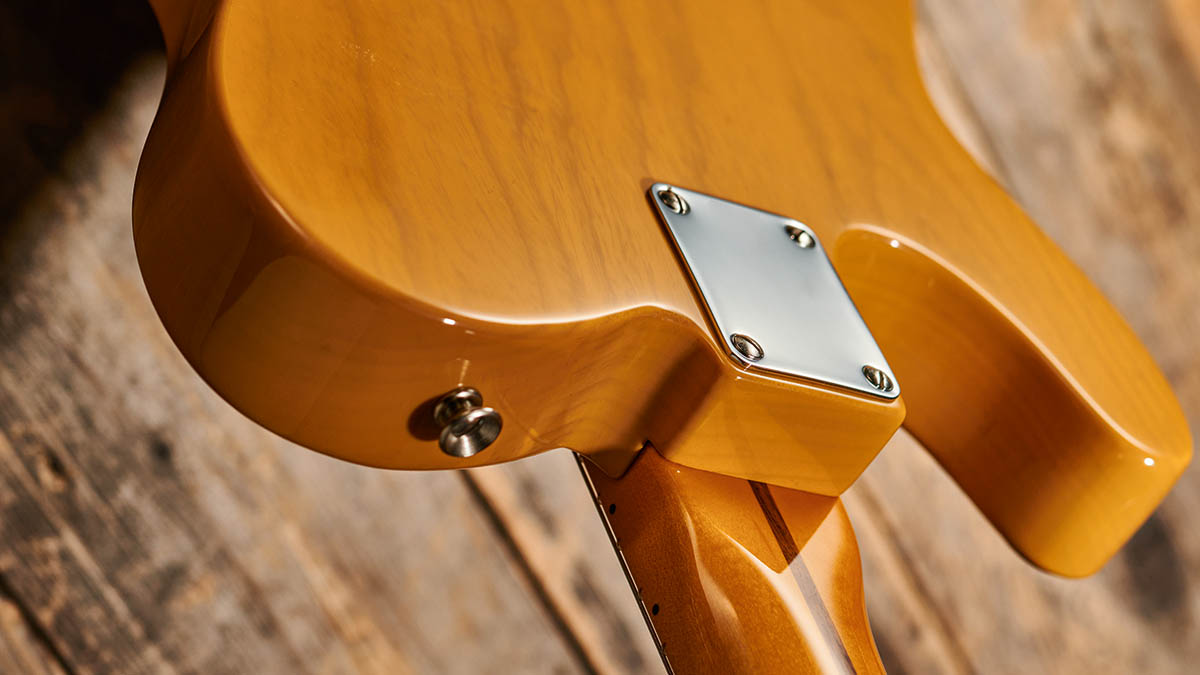
For hardware it’s classic stuff all the way: an ‘ashtray’-style Tele bridge with three uncompensated brass saddles and serial number-stamped chrome base, while the Strat sports a vintage vibrato bridge with cold rolled steel block and Fender-stamped bent steel saddles. Tuners on both guitars are, of course, Kluson-style six-in-a-line, while a single ‘butterfly’ string tree holds down the top two strings on each.
As with the previous American Originals, we get Pure Vintage pickups and it seems they have been voiced somewhere between how they would have been on plugging in back in ’51 or ’61, and how magnet degaussing and general degradation would have made them sound after decades of general use and abuse.
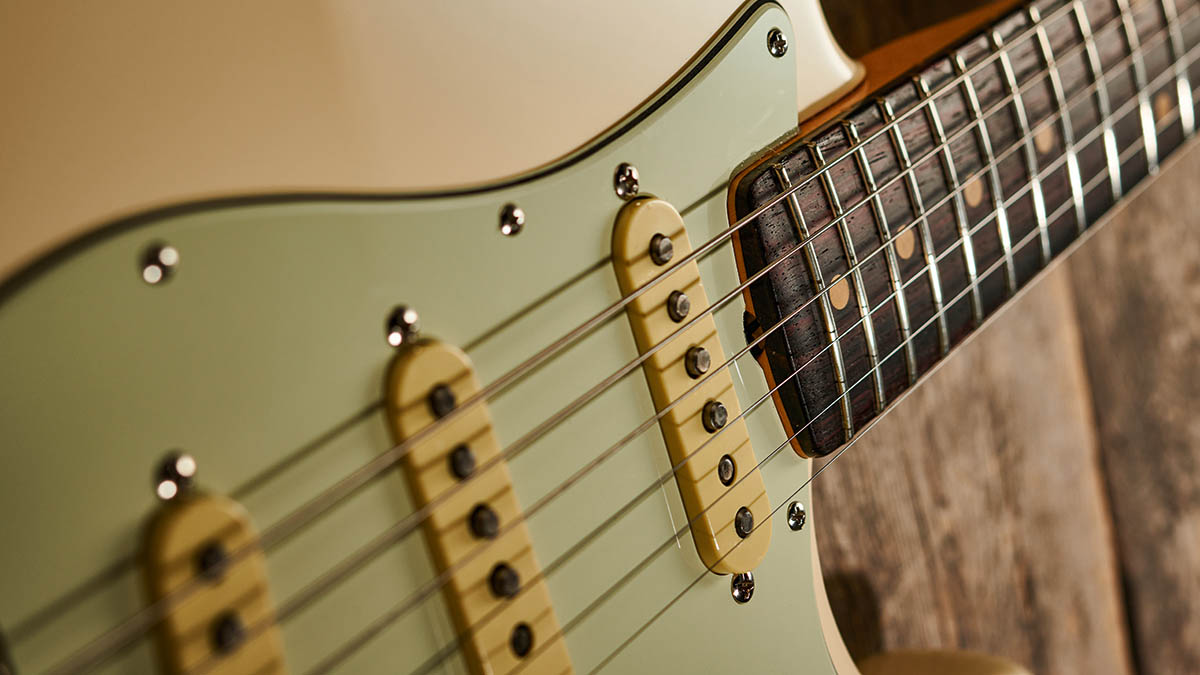
Feel & Sounds
With their narrow/tall frets and vintage-style 184mm (7.25-inch) radius fingerboards you might expect these guitars to feel anachronistic in these days of flatter ’boards and bigger frets. Not a bit of it! Try doing a three-hour set playing barre chords and you’ll thank Leo for his heavily cambered maple or rosewood chunks.
And bending ‘uphill’ on smaller frets makes good sense, too, as there’s more purchase for your finger to get behind the string. The larger U-shaped Tele neck and more slender C-section one on the Strat simply represent the right shape and size for each guitar: we certainly didn’t feel weird swapping between them. In fact, one adapts without a second thought.
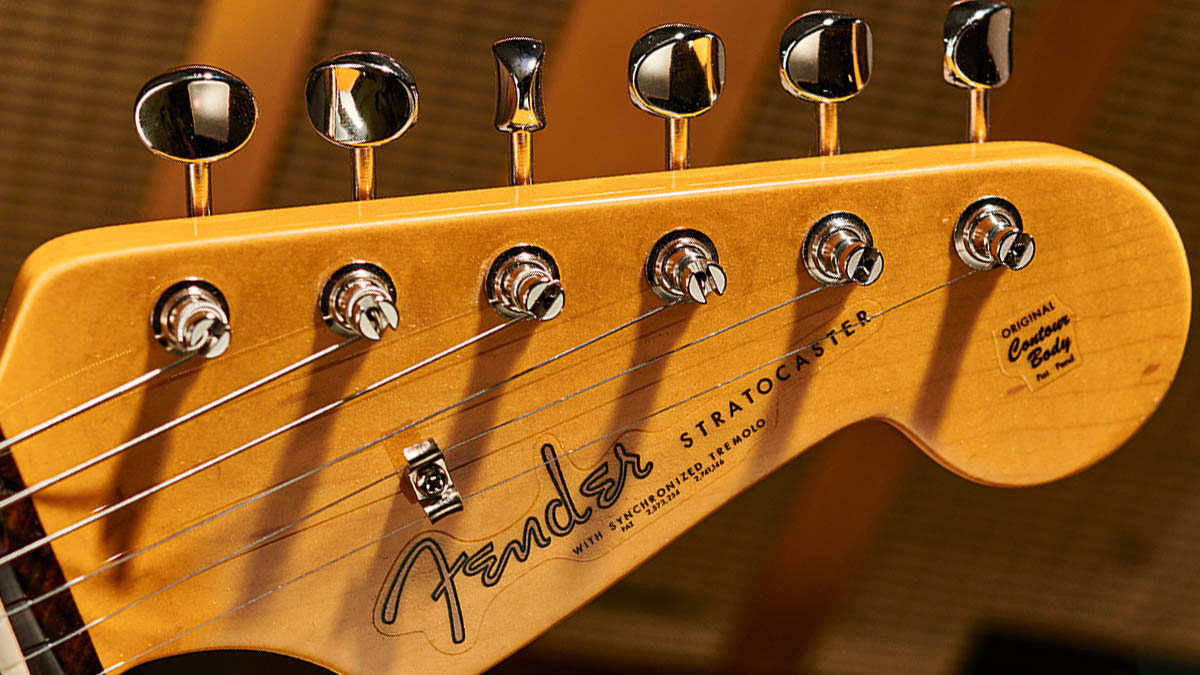
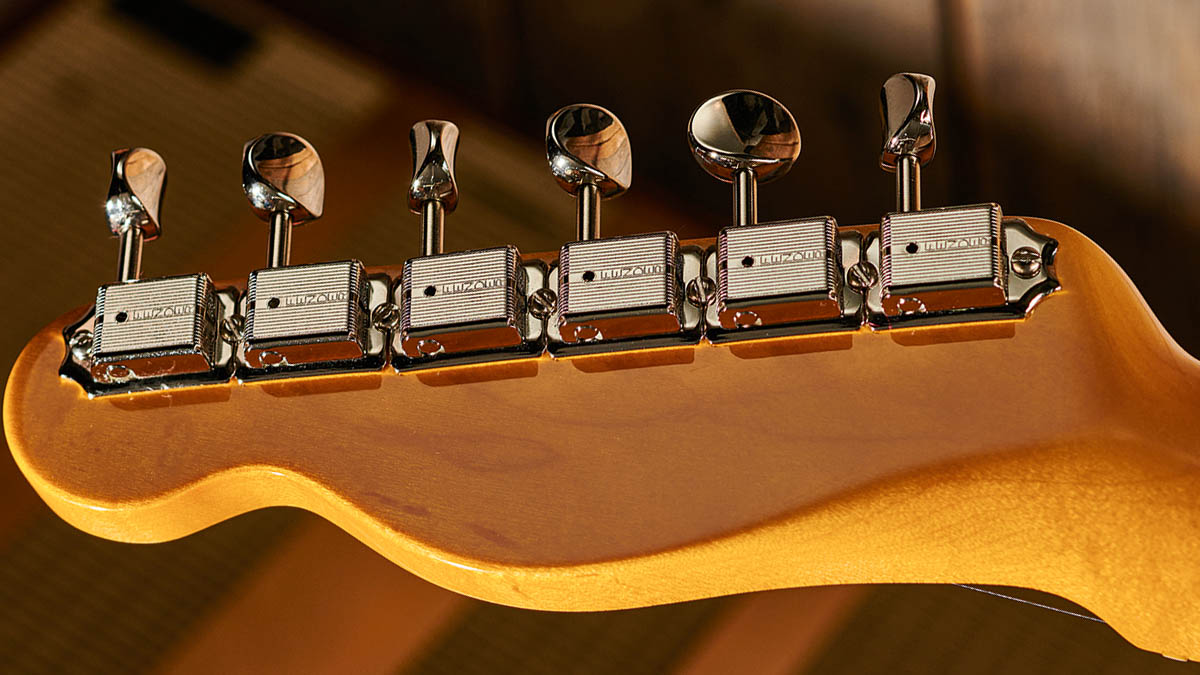
We had the luxury of trying out both guitars through a Fender Deluxe Reverb and a Custom Shop hand-wired Blues Junior ‘Woodie’, so classic clean and also with a good degree of grunt from the BJ. As luck would have it, there was also a Custom Shop 1960 Relic Strat and 1952 Tele on hand for the ‘almost’ perfect comparison (no originals around that day).
Plugging first into the Deluxe with some dreamy Fender spring reverb, you get the real essence of what these guitars are about. Remember, Leo will have designed them to sound as crystal clear as possible, since distortion was an unwanted intruder back then, plus amps were not as toppy as they are today.

The sound you have in your head of every position on the Strat’s five-way switch (which back in 1961 would have been three-way, of course) is exactly what you get. Every guitar journo’s tone cliché is here – pristine, chiming, bell-like, warm, woody – from the clear but mellow neck setting, to the almost vocal in-between positions, and the bright and articulate bridge pickup.
Don’t dismiss that middle pickup, either: it’s one of the most musical sounds on the guitar. And if it’s good enough for Clapton… Of course, the ’61 Strat here has another weapon up its sleeve, which also wasn’t available back then: a tone control for the bridge pickup, which adds a sweeter colour (or darker if you’re driving it hard) overall.
Likewise the Tele. Clarity abounds, but there’s real musicality from each setting of its three-way switch. True, there’s bags of top-end from the bridge single coil, but it’s never harsh, merely authoritative. And that beautifully flute-y neck pickup sounds pure and sweet. Again, don’t ignore the switch’s middle position, as ‘both pickups on’ is a fabulous tone that suits country, pop and even rock (Jimmy’s Stairway solo, anyone?)
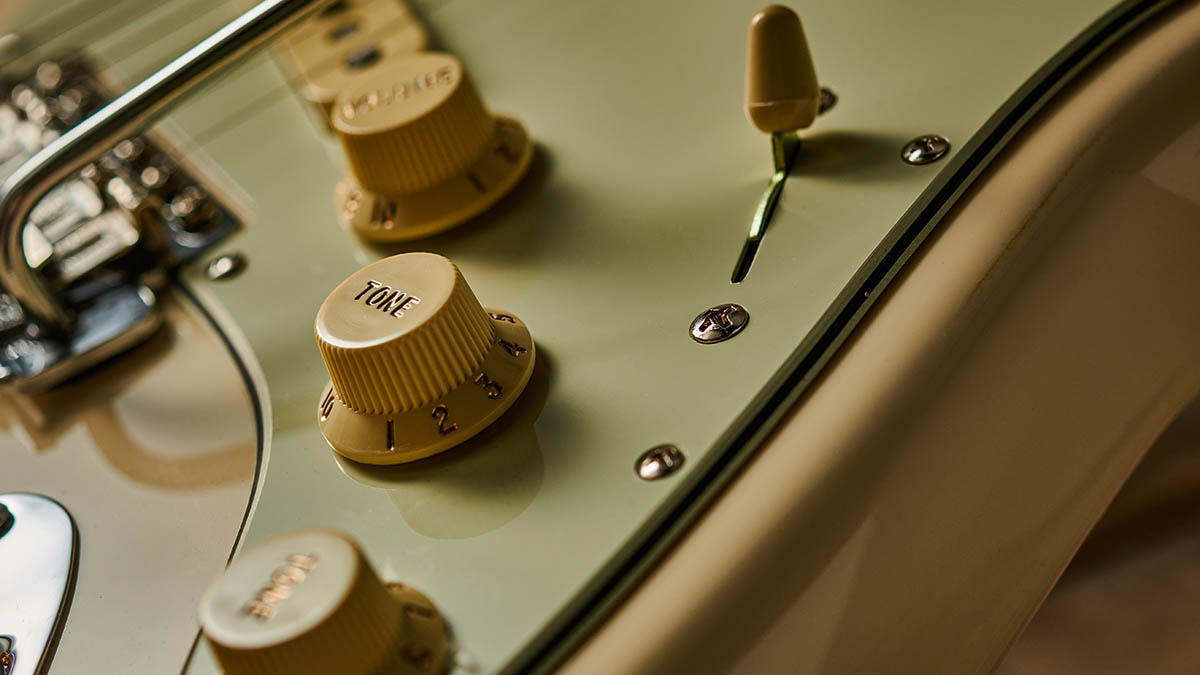
Through the Blues Junior with the master volume low and the gain at around 10, everything just fattens up. It’s not distorted as such, but driving in a most musical way. Actually, it’s here that both guitars’ bridge pickups love to be tamed with their respective tone controls. We’ve said it before, but add enough gain and knock the tones down to about 5, and you could almost be hearing a Gibson SG.
There’s no space here to go into detail about how each guitar compared to its Custom Shop sibling, but generally the CS models had a tad more gain (they were designed as such) and surprisingly were a little brighter, too. To check them out, head over to the link above where you’ll find our video demo, to see and hear all four guitars in action.
Verdict
The success of these instruments is vital for Fender, since they are the essence of what each of its two most famous models represents. If you go back to the 50s and most of the ’60s, a Strat was a Strat and a Tele a Tele. There weren’t the dozens of alternatives we see today: a different colour was virtually all the choice you got. So what you see here really is ‘The Strat’ and ‘The Tele’; all the others are variations on this theme.
The guitars are built to supreme levels of craftsmanship; they play beautifully and sound amazing, just what a great Strat and Tele should be
You won’t be surprised to learn, then, that we think Fender has absolutely nailed these two. Even the tiny concessions to modernity, such as the Strat’s bridge tone control and five-way switch, are what every player would do anyway (so perhaps compensated saddles on the Tele might have been nice?).
The guitars are built to supreme levels of craftsmanship; they play beautifully and sound amazing, just what a great Strat and Tele should be. What’s more, their single-coil clarity will transcend to blues and rock guitar bliss through a decent pedalboard into a cleanish amp.
And, finally, if you’re someone who has struggled with the whole ‘bash ’em up a bit’ relic thing, then these guitars are most definitely for you. They’re pristine and gorgeous – and we’d challenge even the fabled Custom Shop to do it better. So top marks (literally!), Fender!
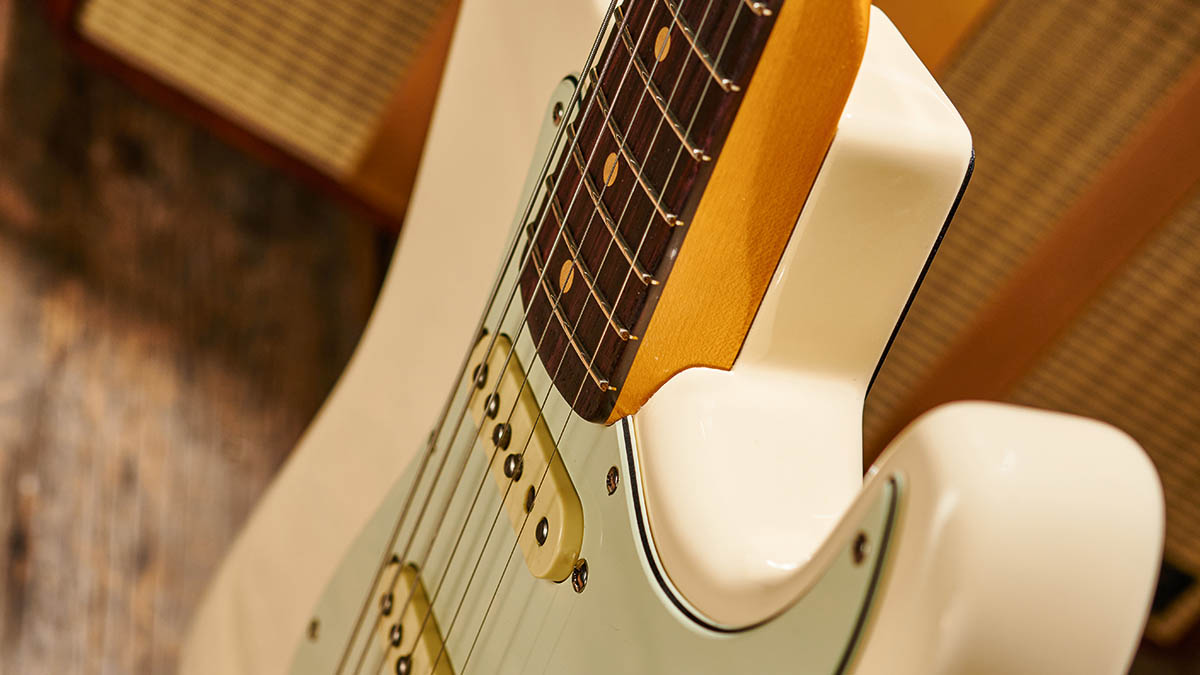
Specs
Fender American Vintage II 1951 Telecaster
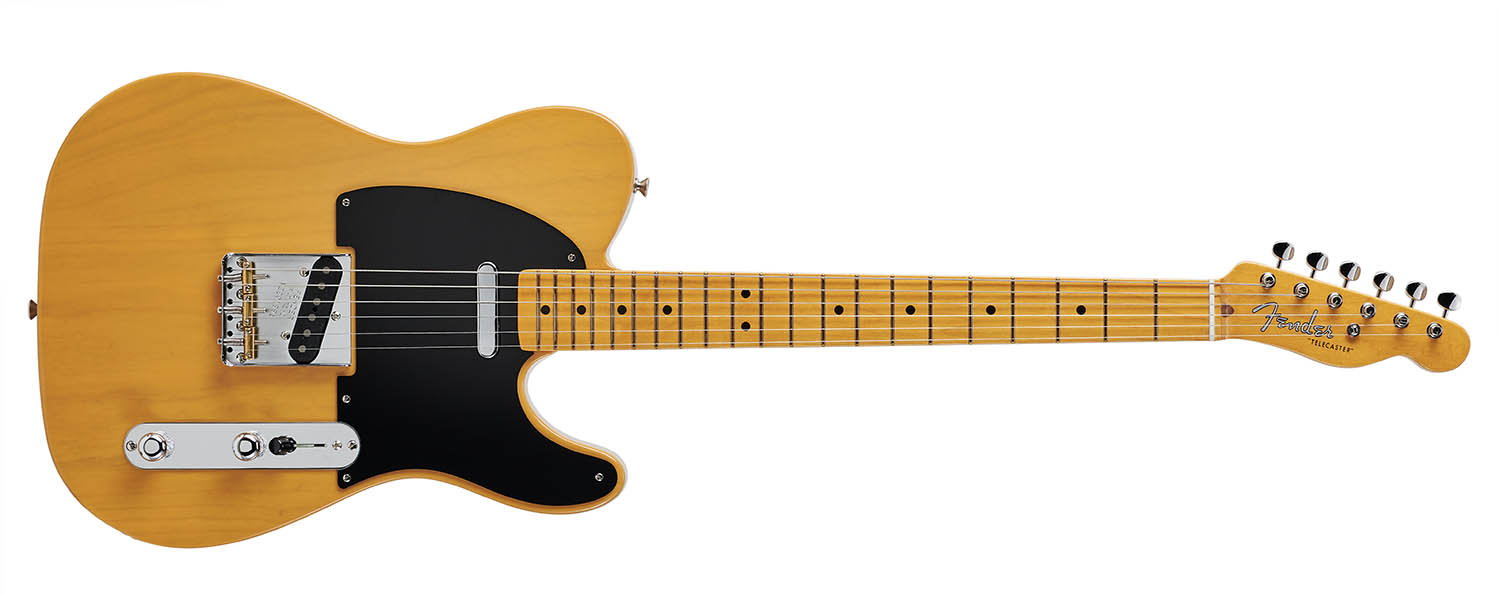
- PRICE: $2,249 / £2,049 (inc case)
- ORIGIN: USA
- TYPE: Double-cutaway electric
- BODY: 2-piece alder
- NECK: Maple, medium C profile, bolt-on
- SCALE LENGTH: 648mm (25.5”)
- NUT/WIDTH: Bone/42mm
- FINGERBOARD: Rosewood (slab-style), clay dots, 184mm (7.25”) radius
- FRETS: 21, ‘vintage tall’
- HARDWARE: Fender Pure Vintage vibrato with cold rolled steel block and 6x bent steel saddles; Fender Deluxe vintage-style tuners
- STRING SPACING, BRIDGE: 56mm
- ELECTRICS: 3x Fender Pure Vintage 61 single coils; 5-way lever pickup selector switch, master volume, tone 1 (neck and middle), tone 2 (bridge)
- WEIGHT (kg/lb): 3.65/8.04
- OPTIONS: N/A
- RANGE OPTIONS: The American Vintage II ’57 Stratocaster (£2,099) comes with either ash or alder body, V-shaped maple neck and a trio of Pure Vintage 57 single coils. The AV II ’73 Stratocaster (£2,149) has a large headstock, ‘Bullet’ truss rod adjuster, 3-bolt neck join, maple or ‘round lam’ rosewood ’board, and Pure Vintage 73 single coils
- LEFT-HANDERS: AV II ’57 Stratocaster LH (£2,049)
- FINISH: Olympic White (as reviewed), Fiesta Red, 3-Color Sunburst – all gloss nitrocellulose
Fender American Vintage II 1961 Stratocaster
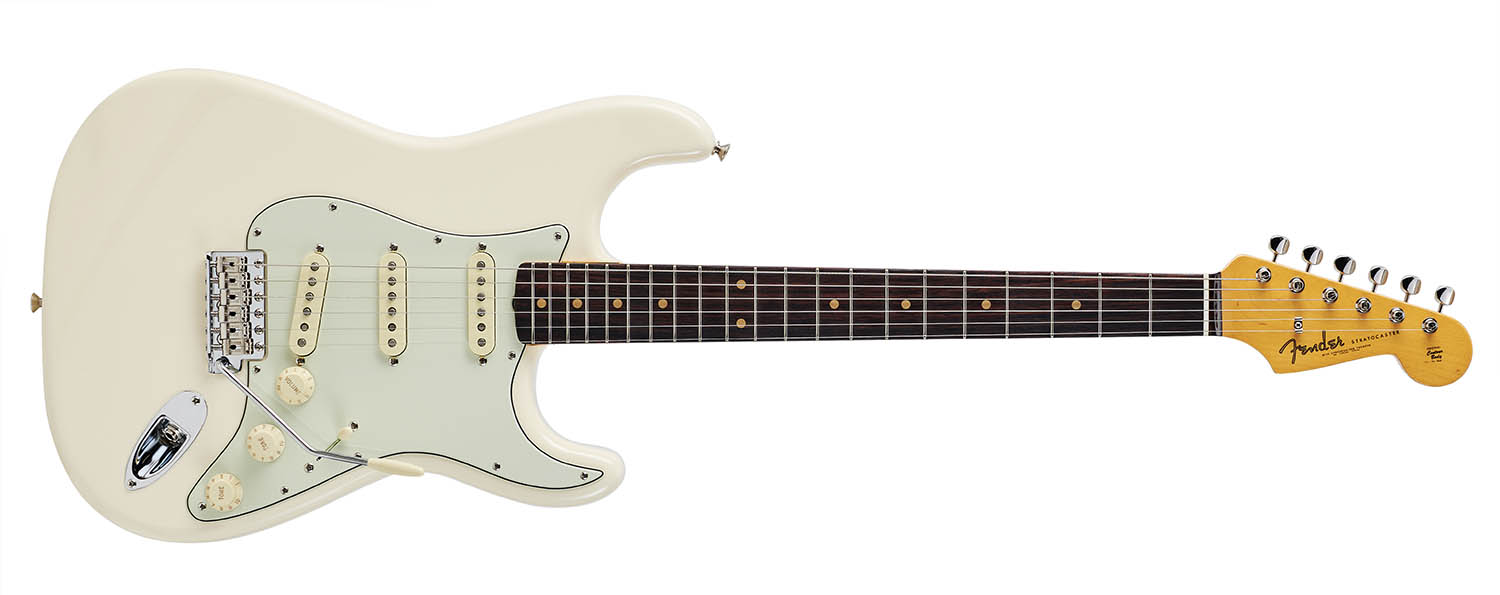
- PRICE: $/£2,099 (inc case)
- ORIGIN: USA
- TYPE: Single-cutaway electric
- BODY: 2-piece ash
- NECK: Maple, U-shaped profile, bolt-on
- SCALE LENGTH: 648mm (25.5)
- NUT/WIDTH: Bone/42mm
- FINGERBOARD: Maple, integral to neck, black dot inlays, 184mm (7.25”) radius
- FRETS: 21, ‘vintage tall’
- HARDWARE: Fender Pure Vintage 3-Saddle Tele bridge with brass barrel saddles; Fender Deluxe vintage-style tuners; chrome-plated control plate with knurled metal knobs
- STRING SPACING, BRIDGE: 56mm
- ELECTRICS: 2x Fender Pure Vintage 51 single coils; 3-way lever pickup selector, master volume and tone
WEIGHT (kg/lb): 3.35/7.365 - OPTIONS: N/A
- RANGE OPTIONS: AV II ’63 Telecaster (£2,049) with alder body, C-shaped neck, ‘round lam’ rosewood ’board and Pure Vintage 63 Tele pickups. (See gallery on page 88)
- LEFT-HANDERS: AV II ’51 Telecaster LH (£2,099)
- FINISH: Butterscotch Blonde (as reviewed) – all gloss nitrocellulose
- CONTACT: Fender
In the late '70s and early '80s Neville worked for Selmer/Norlin as one of Gibson's UK guitar repairers, before joining CBS/Fender in the same role. He then moved to the fledgling Guitarist magazine as staff writer, rising to editor in 1986. He remained editor for 14 years before launching and editing Guitar Techniques magazine. Although now semi-retired he still works for both magazines. Neville has been a member of Marty Wilde's 'Wildcats' since 1983, and recorded his own album, The Blues Headlines, in 2019.
“It holds its own purely as a playable guitar. It’s really cool for the traveling musician – you can bring it on a flight and it fits beneath the seat”: Why Steve Stevens put his name to a foldable guitar
“Finely tuned instruments with effortless playability and one of the best vibratos there is”: PRS Standard 24 Satin and S2 Standard 24 Satin review












